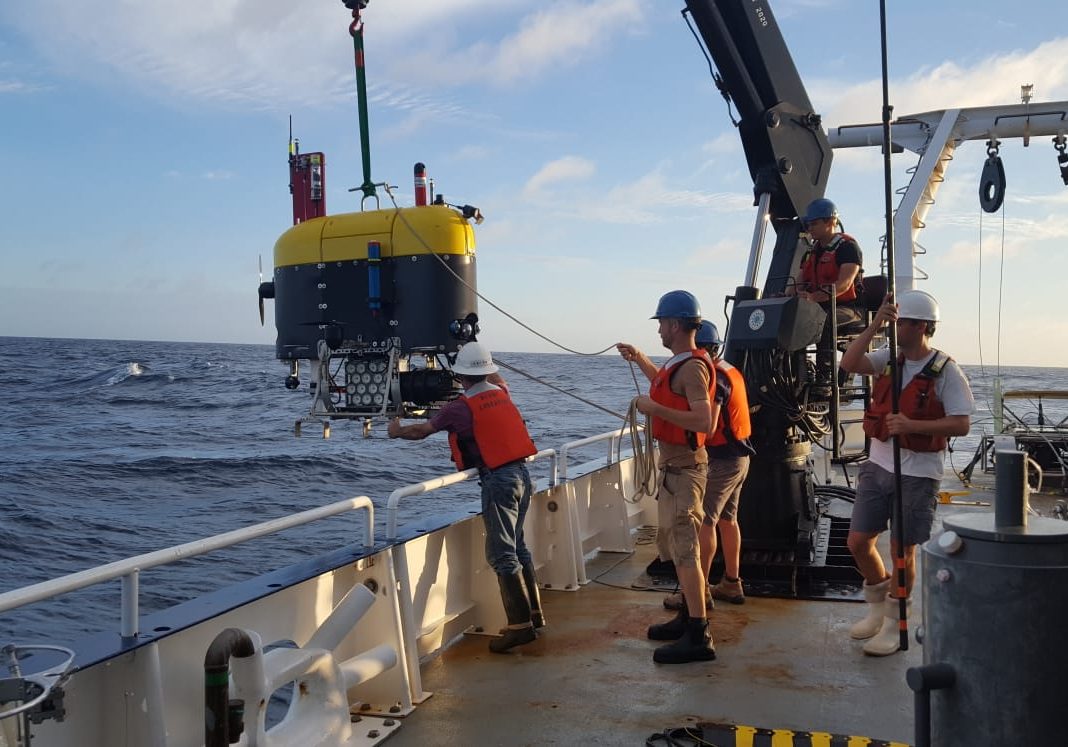Setting Mesobot Free October 6, 2022
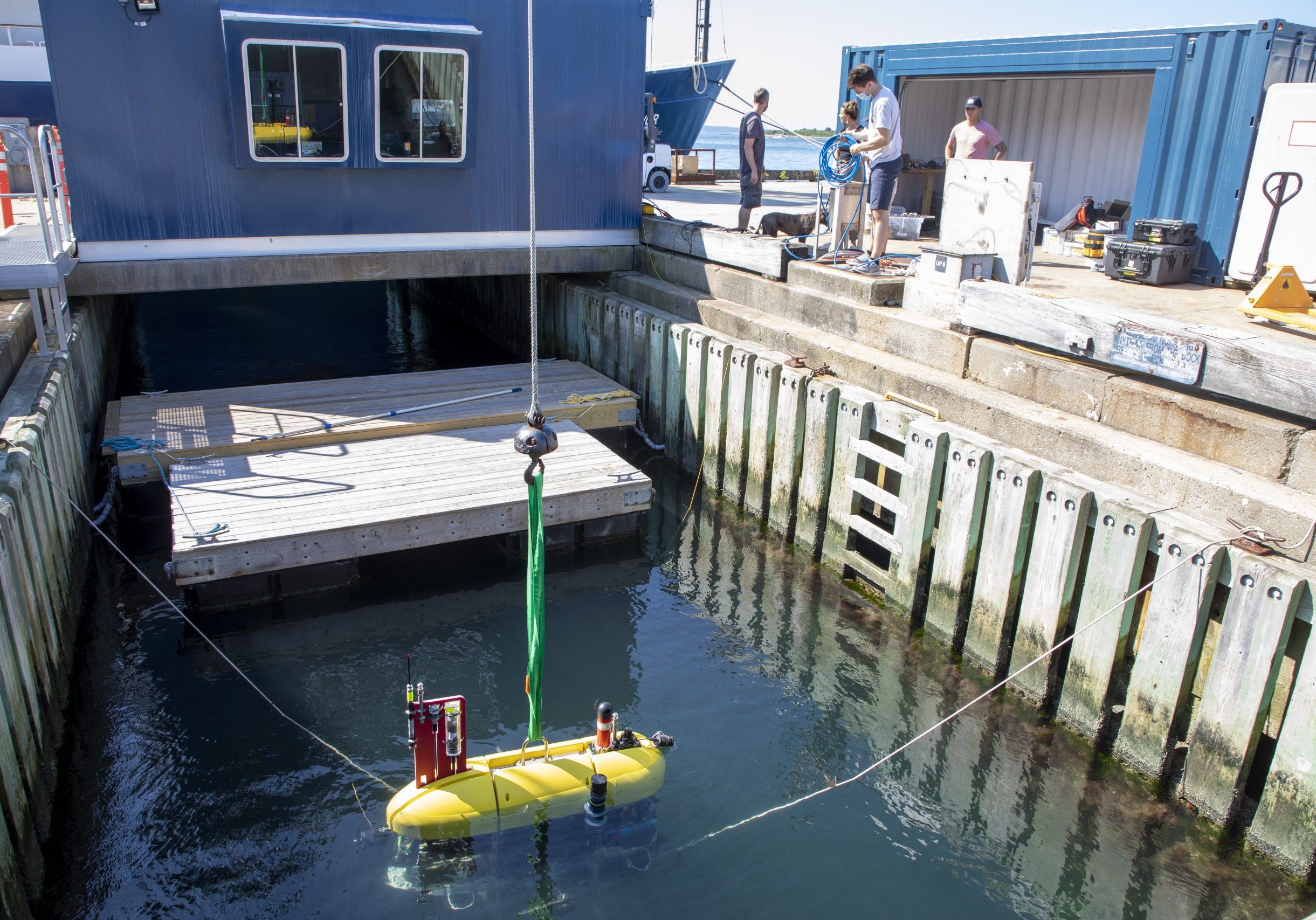
No single instrument can tell scientists everything about the twilight zone. To get a bigger picture of this mysterious realm, it takes a whole suite of vehicles, sensors, and samplers working together—and on its August 2022 cruise, the OTZ team deployed almost every tool in its arsenal simultaneously, from towed trawl nets to fully-autonomous underwater robots. When viewed together, the complementary datasets these tools provide will give incredible details on the inner workings of the twilight zone.
For OTZ engineers, however, this particular mission required some steely nerves. Many of them had spent years designing and building Mesobot, and on this voyage, had to let it loose in the ocean for up to 24 hours, where it dove amidst three moving ships and miles of dangling metal cables. How do you prepare a robot for a job this difficult?
The answer: Testing, testing, and more testing. Even the best-designed underwater vehicles require constant diagnostics and tweaking to ensure they’re working correctly. Although Mesobot performed perfectly in dunk tanks at Woods Hole, nothing is completely predictable with high-tech machines, and engineers often have to troubleshoot problems on the fly while at sea.
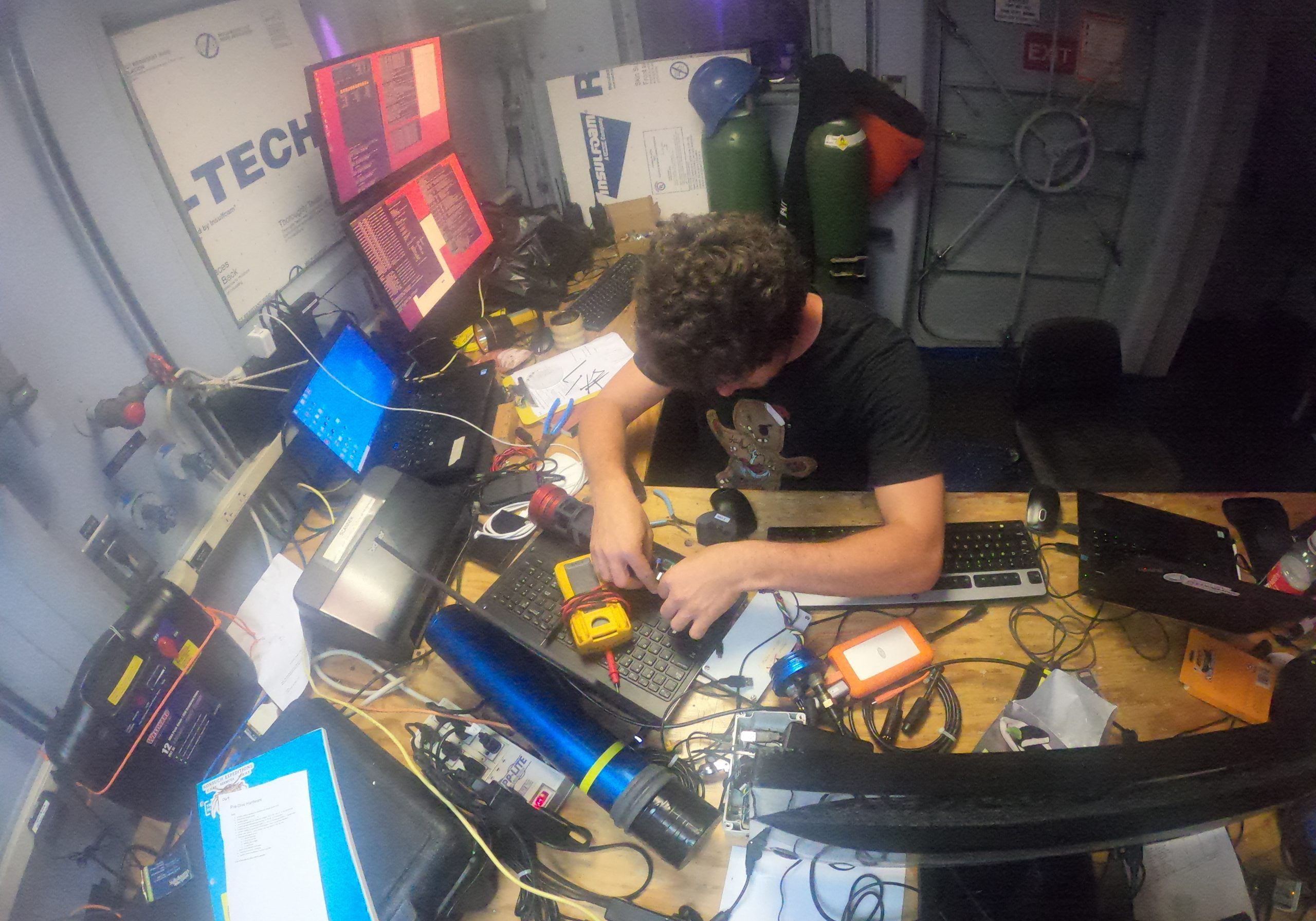
On its first test while aboard the R/V Endeavor, for instance, the vehicle initially didn’t dive as expected. After hoisting it aboard, though, the team quickly diagnosed the problem: a loose propeller on a thruster shaft—a small rod that connects each of the vehicle’s propellors to a motor. The team found that one shaft was spinning quickly, but its attached prop wasn’t, leaving the vehicle floating at the surface. After quickly securing the prop, the group set Mesobot back into the water.
During this second test dive, a different problem arose. Mesobot seemed to dive just fine, but shot up to the surface when its thrusters stopped turning. Again, the problem was simple: after reviewing data from the vehicle, engineers realized that the vehicle simply wasn’t carrying enough weight to stay hovering a specific depth, so when its thrusters shut down near the end of its mission, it bobbed upward. The fix: add another 5 pounds of lead weight to the vehicle’s frame.
With ballast and thrusters repaired, the team could finally move on to testing Mesobot’s instruments. This time, the vehicle worked perfectly while submerged, running through its pre-programmed mission without a hitch. With tasks complete and samples collected, Mesobot re-emerged at the surface several miles away, sending a telltale satellite signal back to the team aboard the Endeavor. Yet before the engineers could celebrate, a third problem reared its head: the robot's satellite signal vanished as quickly as it had appeared.
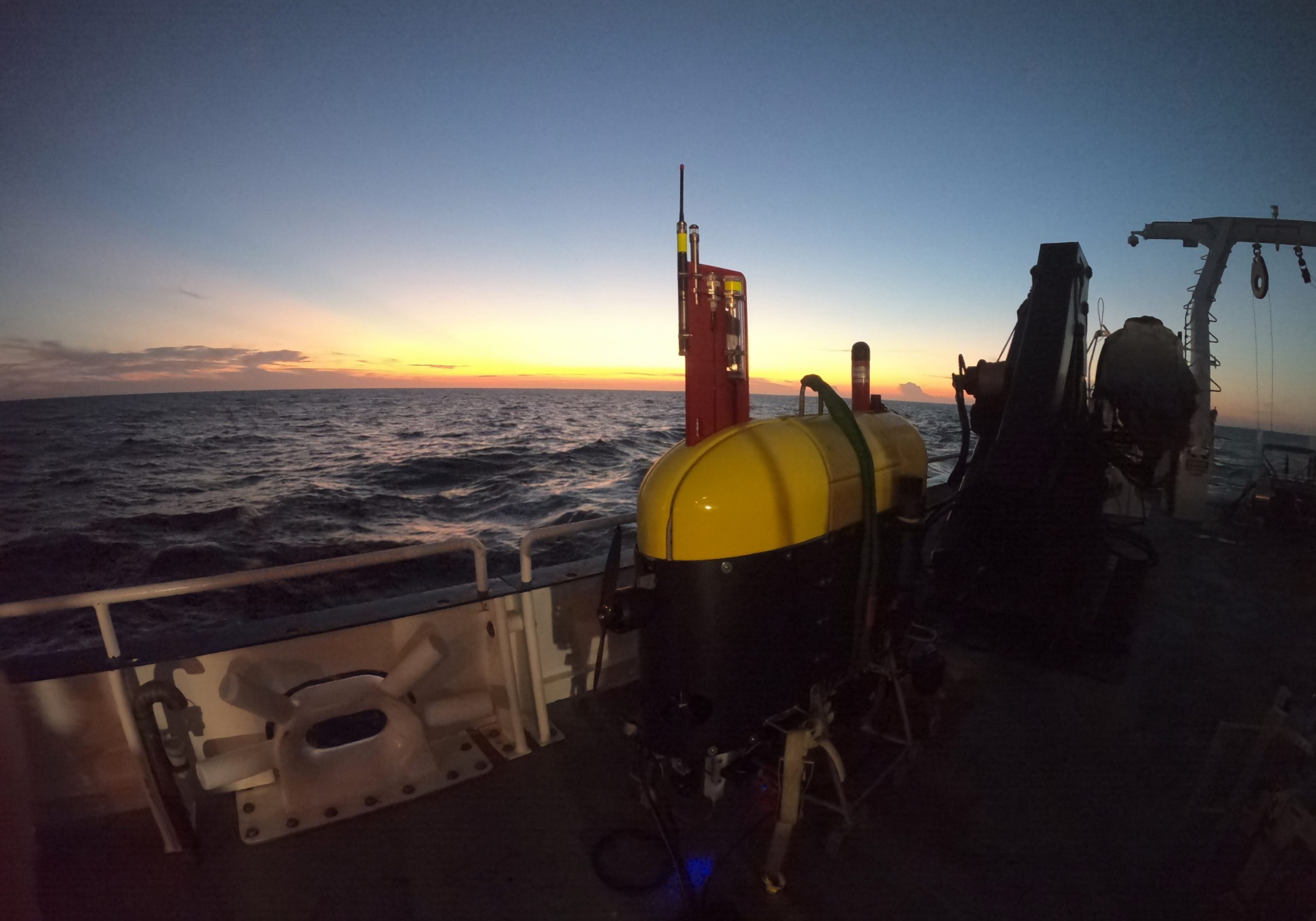
To make matters worse, the ship had moved about 20 miles away from the spot where Mesobot was expected to emerge, putting it out of range of a backup radio direction finder (RDF) beacon aboard the robotic vehicle. All the team could do was to make their best estimate of where Mesobot would surface based on its last reported location and their best estimate of the winds and currents. With the Endeavor steaming rapidly towards that spot, the team scanned the horizon anxiously, watching and listening for signs of life—when finally, a screeching burst of sound filled the ship’s lab. Mesobot’s Radio Directional Finder beacon had phoned home, confirming that it was nearby.
“It wasn’t exactly where we had guessed, but we were close enough that we could pick up the RDF beacon, so we were able to get a bearing on its location. We recovered Mesobot about two hours after losing contact, to great fanfare from personnel aboard the ship. Those raspy RDF hits never sounded better,” says OTZ senior scientist Dana Yoerger. “To paraphrase Daniel Boone, Mesobot was never lost, But it was ‘a might bewildered.’”
When deploying a complex robot like Mesobot, glitches like these are par for the course, says Yoerger—but he and his team of engineers are constantly watching out for computer errors or malfunctioning parts to ensure that the vehicle returns with its valuable data intact. Over the course of this cruise, Mesobot successfully gathered useful data from video cameras, sonar recordings, eDNA samples, and more—but the minor technical problems that popped up along the way were equally valuable, says OTZ engineer Eric Hayden.
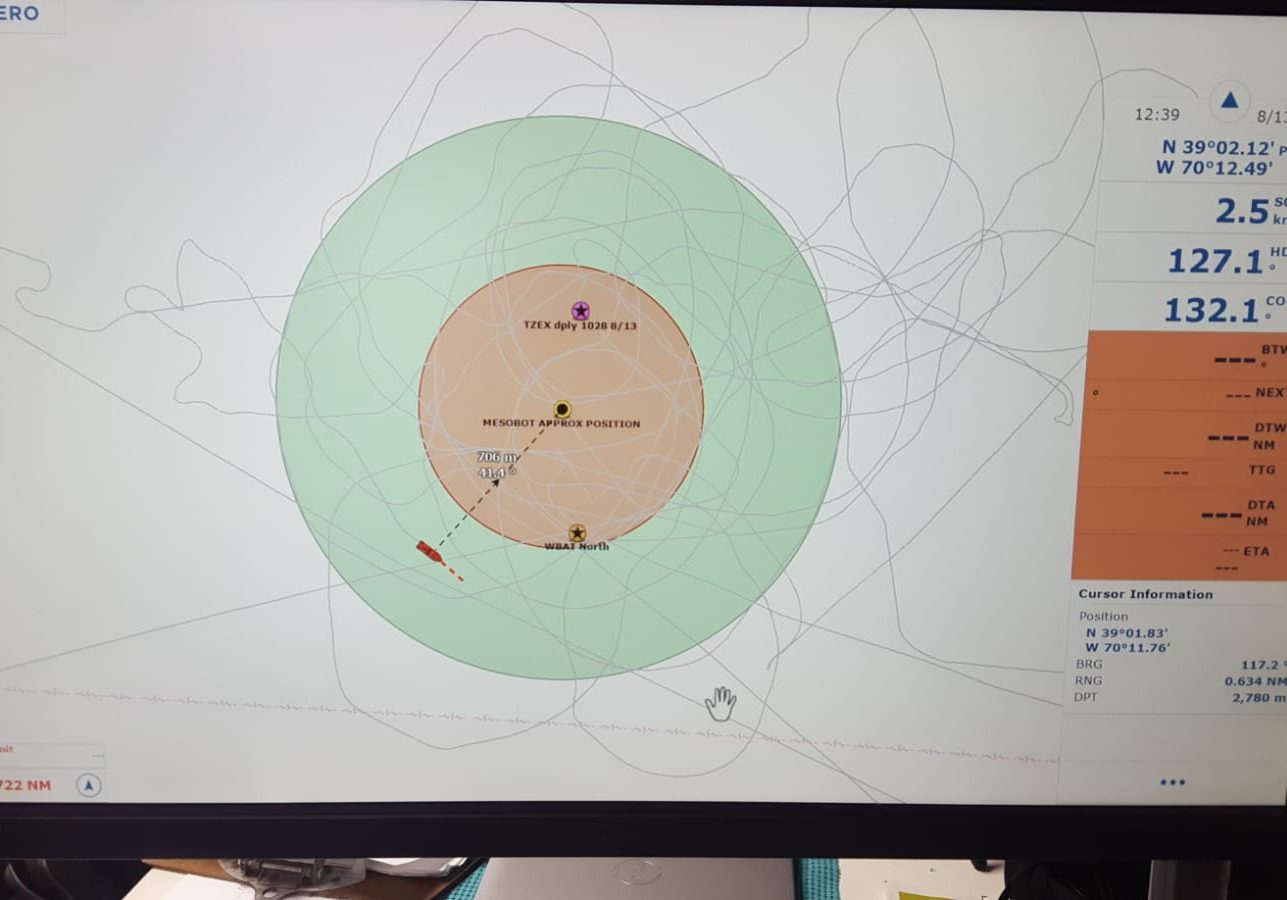
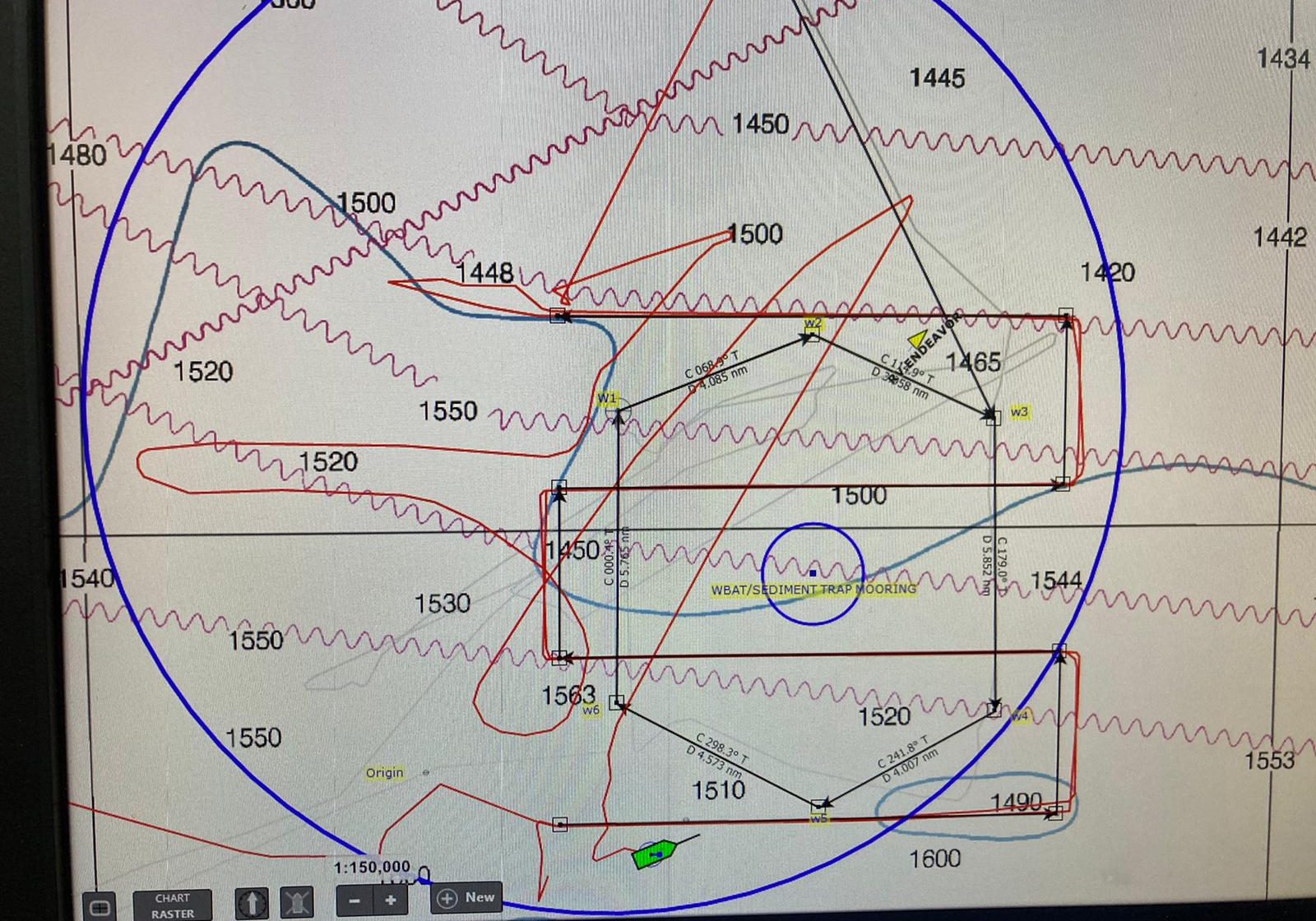
Case in point: during this cruise, the Endeavor and its companion ship, the R/V Endeavor, had to move constantly to avoid tangling each others’ winch lines or hitting autonomous vehicles, he notes—but ship operations made it impossible to consistently stay within acoustic range of Mesobot. “This meant that we were relying heavily on surface beacons to find the vehicle, which was new to us. We realized that having the robot’s satellite beacon fail would put us in an extremely vulnerable position,” Hayden says.
In other words, discovering new bugs in the OTZ team’s robotic vehicles can be just as valuable to scientists as the data those vehicles collect—it not only helps each robot perform its missions successfully, but also provides real-world lessons that will help make the next generation of machines even more capable.
